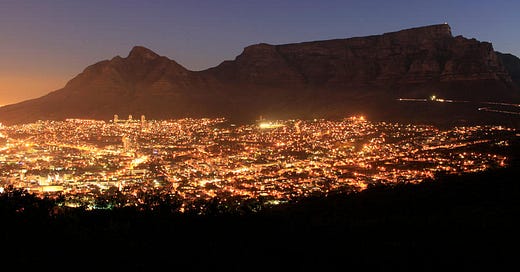To Investors,
In 2023 I wrote a letter about how residential solar is the answer to South Africa’s energy woes.
You can read it here.
In the same year, the South African government announced a debt relief package of R254 billion for Eskom’s debt and committed to also take up R70 billion of debt from Eskom’s balance sheet to hopefully reduce the debt further to sustainable levels.
Since then, not much has changed in South Africa (SA), with rolling blackouts continuing as commonplace. And I’m not sure that that move alone will make a big enough impact to end loadshedding.
Action to resuscitate the 95% market share supplier of electricity in SA should be more aggressive.
While committing to absorb Eskom’s debt the government should also pointedly strip market share away from Eskom by supporting residential solar initiatives.
Here's how it could work:
Phase 1: Subsidise Residential Solar Installations
To encourage widespread adoption of solar energy, the government should heavily subsidise the installation of residential solar systems, including battery storage. This could take the shape of tax credits offered if people go solar.
For example, in the United States there’s a tax credit for new electric vehicle buyers through a policy called the Inflation Reduction Act. A similar initiative in SA would significantly reduce the initial cost of adoption of a solar system for homeowners, promoting independence from the national grid should households wish; however, the bigger play would be to become net producers of energy.
Phase 2: Implement Net Metering Nationwide
At the same time as subsidising solar, following Cape Town's lead, all municipalities should adopt a net metering system. This system allows homeowners or businesses with solar panels to sell excess energy back to the grid, stimulating economic activity. For instance, in 2023, Cape Town's net metering system generated R26 million for businesses and households.
Additionally, this will lay the groundwork for a peer-to-peer energy sharing network, which could enable homeowners to share or sell surplus energy to neighbours. This model has proven successful in Australia for example, through collaborations with a company called PowerLedger.
Outcomes
By reducing reliance on Eskom, the national grid would be relieved of its current strain, allowing Eskom to focus on restructuring and upgrading its inefficient infrastructure. Moreover, the proliferation of residential solar systems would ensure energy availability across all regions.
It’s crucial to recognize that, as a state-owned entity, Eskom's loss of market share would not have as severe an impact as it would in a free market. So, to address Eskom’s staggering debt of R424 billion, we need to do something bold and that will benefit future generations.
I ran the numbers.
Over the last 5 years Eskom has averaged a debt-to-assets ratio of 54%, and a debt to capital ratio of 68%. That, and a return on assets ratio of -1.92%, led to an interest coverage ratio of 1.32 in the same period - suggesting that a lot of the financial and operational issues at Eskom may be fixed by considering a more flexible capital mix that accommodates for more equity and relies less on debt - however something more radical is desperately needed.
This idea to strip market share away from Eskom by supporting residential solar + net metering nationwide may be the answer.
I hope you enjoyed this letter.
One the journey to becoming a master capital allocator - one lesson down, a billion more to go.
Respectfully,
-Mansa
READER NOTE: If you liked this post, feel free to hit the subscribe button and share with someone who might also find this interesting.
What did you think about this letter? Let me know in the comments 👇🏾
Disclaimer: this note is not financial advice and is for informational and entertainment purposes only. We may hold positions in the companies discussed. Do your own research.



